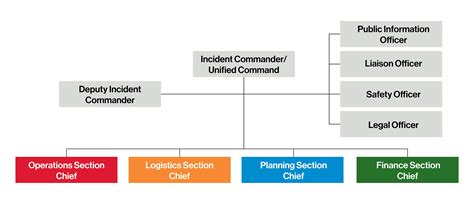A lot of people ask which of the following is not a recommended characteristic for incident objectives. In the Incident Command System (ICS), management by objectives is one of the founding principles. It consists of the following steps:
1: The Incident Commander (IC) outlines what they intend to do. (The incident objectives)
2: The Planning Section Chief (PSC) creates broad strategies to achieve these goals. (The strategies)
3: The Operations SC, PSC, and maybe the Logistics SC establish particular tasks to implement the Strategies. (The tactics)
Many people are confused about which of the following is not a recommended characteristic for incident objectives? To answer this question, first, we have to know what do you mean by incident objectives?.
Incident objectives are the aims that shall achieve to resolve an incident successfully. It may appear that determining objectives, strategies, and tactics is easy, but it is not. The words “objectives,” “strategies,” and “tactics” are used improperly and interchangeably.
Now, returning to our main concern:
Which of the Following is not a Recommended Characteristic for incident objectives?
An incident objective should have specific characteristics but, “Stated in broad terms to allow for flexibility” is never one of them. The incident’s goals are provided to everyone concerned. Goals must be logically achievable to ensure that all team members work in harmony.
Flexibility is permitted when choosing how to accomplish goals, but not while determining the goals themselves. While making incident objectives, we should keep in mind that flexibility will never be the trait of incident objectives. Poor objectives lead to a lack of direction and inappropriate tasking.
Following are not Recommended Characteristics for incident Objectives:
- Too simple to be considerable:
It is very general to be meaningful. It does not have a proper explanation.
- Inconsistent with the state of the resource:
The resources of the agency are not kept in mind while making the incident objective.
- Unable to achieve:
It seems too imaginary and hypothetical for accomplishment.
- Inadvertently assigned:
Inappropriately, it does delegate without doing proper research.
- Too restrictive to permit for other techniques or creativity:
There is no opportunity for alternative approaches. A poor incident objective also has no way for innovation or creativity.
- Imprecise or ambiguous:
Such an objective is very unclear and vague. It includes bogus and indefinite information.
- Completely incomprehensible:
Collectively, it does not have any characteristics of a good incident objective.
Which of the Following is not a Recommended Characteristic for incident Objectives? Incident objectives?
The IC defines the Incident Objectives, which are not restricted to a particular operating time but rather encompass the whole incident. When incident objectives achieve, either the IC should discover the missing subject or the mission should seriously consider suspended.
Incident objectives should permit mobility for the plan. As we explained earlier, Flexibility is allowed when choosing how to accomplish goals, but not while determining the goals themselves. So, The OSC has a lot of freedom in deciding how to achieve the incident objective throughout the event.
Which of the Following is not a Recommended Characteristic for incident objectives? Characteristics of Good Incident Objectives?
The IC states the incident aims at an ICS 201 or ICS 202 template. The following characteristics are the core of good incident objectives.
The IC states the incident aims at an ICS 201 or ICS 202 template. The following qualities are the core of good incident objectives.
- Specific:
In defining the objectives, the terminology must be exact and obvious. It should not include bogus and indefinite data. The incident objectives should relate specifically to the event.
- Measurable:
The structure and description of the objectives should be measurable. The incident objectives should be possible to allow for a final accounting to determine if the plan is on track.
- Action-Oriented:
While making the incident objective of an event, keep in mind that it should be performable in the field. The goal must be a specific activity that outlines the intended outcomes. It should not be hypothetical and imaginary.
- Realistic:
The objectives must be attainable in the resources available to the agency for the event. Even though executing them may take many operational sessions.
- Time Sensitive:
The incident objective should monitor against a specific benchmark that includes a time range specifying when the goals must complete. There must be a specified time frame.

